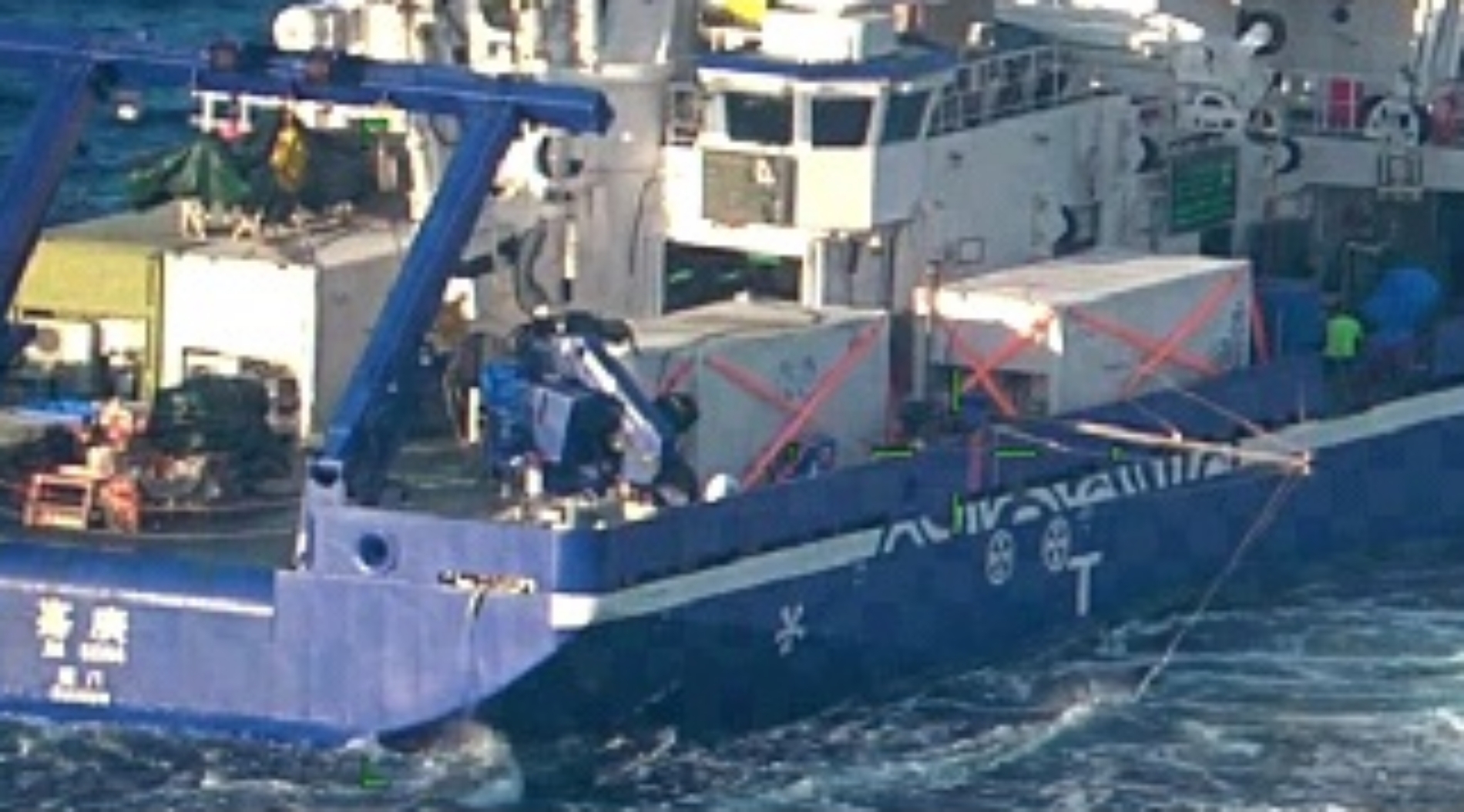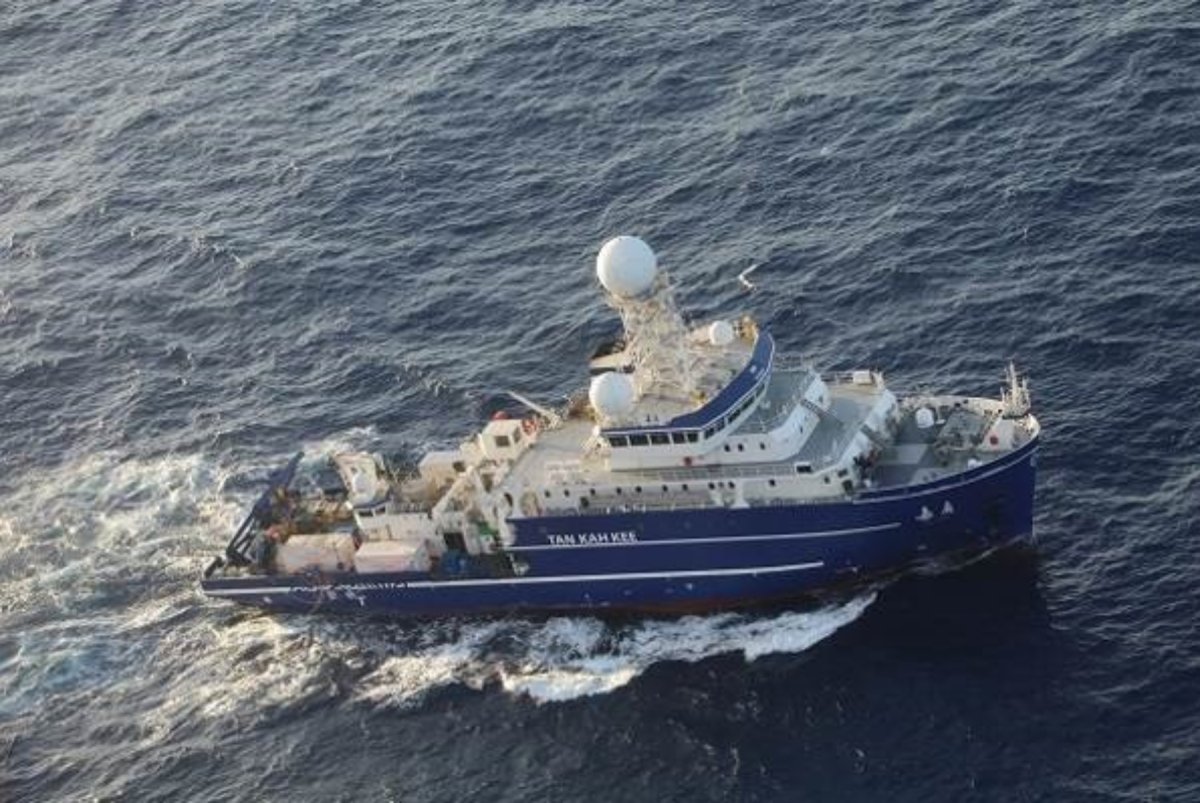
A Chinese research vessel has been spotted conducting unknown activities in waters claimed by Japan—a United States treaty ally—near a remote, disputed “island” in the Pacific Ocean.
The incident occurred on Monday near Japan’s Okinotorishima Island. The Chinese Foreign Ministry claimed that the island is a reef and therefore not entitled to an exclusive economic zone (EEZ), and the ship thus has the right to exercise the freedom of the high seas.
Marine Operations at Xiamen University in China—the operator of the vessel R/V Tan Kah Kee—did not immediately respond to a Newsweek request for comment via email.
Why It Matters
According to the Center for Strategic and International Studies, China possesses the largest civilian research vessel fleet in the world, which is being employed to advance Beijing’s strategic ambitions, including collecting data about the world’s oceans for military purposes.
Newsweek previously reported on the movements of Chinese research ships—operated by either the government or civilian entities—in different bodies of water across the Indo-Pacific region, including the Indian Ocean, the South Pacific Ocean, and waters near Japan.
What To Know
The Japanese Coast Guard reported on Monday that the Tan Kah Kee was detected 167 miles east of Okinotorishima Island, within Japan’s declared 230-mile-wide EEZ around the island.
A photo provided by the Coast Guard appears to show the Chinese ship deploying what appeared to be a wire into the ocean. A Japanese patrol aircraft issued radio warnings to the vessel, stating that no research activities are permitted in Japan’s EEZ without Tokyo’s consent.
The United Nations Convention on the Law of the Sea (UNCLOS), which establishes a legal framework for order in the world’s oceans and seas, says that a state has sovereign rights to explore and exploit its EEZ, as well as jurisdiction over scientific research within the area.
The Chinese ship left the area about five hours later, at 10:45 p.m. local time. The Japan Coast Guard reported the ship’s latest position at 230 miles east of Okinotorishima Island.

Japan Coast Guard
The island is the southernmost territory of Japan, located about 1,000 miles south of Tokyo. According to the Tokyo Metropolitan Government, the EEZ based on the island’s coastline covers 162,000 square miles—larger than Japan’s total land area of 146,000 square miles.
Japan designated Okinotorishima as a remote island in 2010. China has argued—citing UNCLOS—that it is merely a reef, with a surface area of less than 107 square feet above water at high tide, adding that Tokyo’s move constitutes an encroachment on the high seas.
The Tokyo Metropolitan Government, which administers Okinotorishima Island, describes it as an “eggplant-shaped” reef. Two islets, surrounded by concrete seawalls since 1987, are located within the reef that “remain above the sea surface even at high tide.”
According to UNCLOS, an island is defined as a “naturally formed area of land” that is surrounded by water and above water at high tide, while rocks are not entitled to an EEZ, as they “cannot sustain human habitation or economic life of their own.”

Japan Coast Guard
What People Are Saying
Mao Ning, a spokesperson for the Chinese Foreign Ministry, said: “According to UNCLOS, [Okinotorishima Island] is a reef, not an island. As such, it is not entitled to an EEZ or continental shelf. Japan’s claim of an EEZ around the reef violates international law. China’s research vessel was exercising the freedom of the high seas with regard to its activities in the waters, and Japan has no right to interfere.”
The Tokyo Metropolitan Government said: “The waters around the Okinotorishima Island is known to be the spawning grounds and migration route for bonito, tuna, and other fish. Valuable mineral resources such as manganese are also said to exist on the seafloor. Manganese contains copper, methane hydrates (which are expected to be an alternative energy source for petroleum), and other substances.”
What Happens Next
China is likely to continue its maritime research activities in the Indo-Pacific region. It remains to be seen if Japan will strengthen its patrols around the disputed island.





